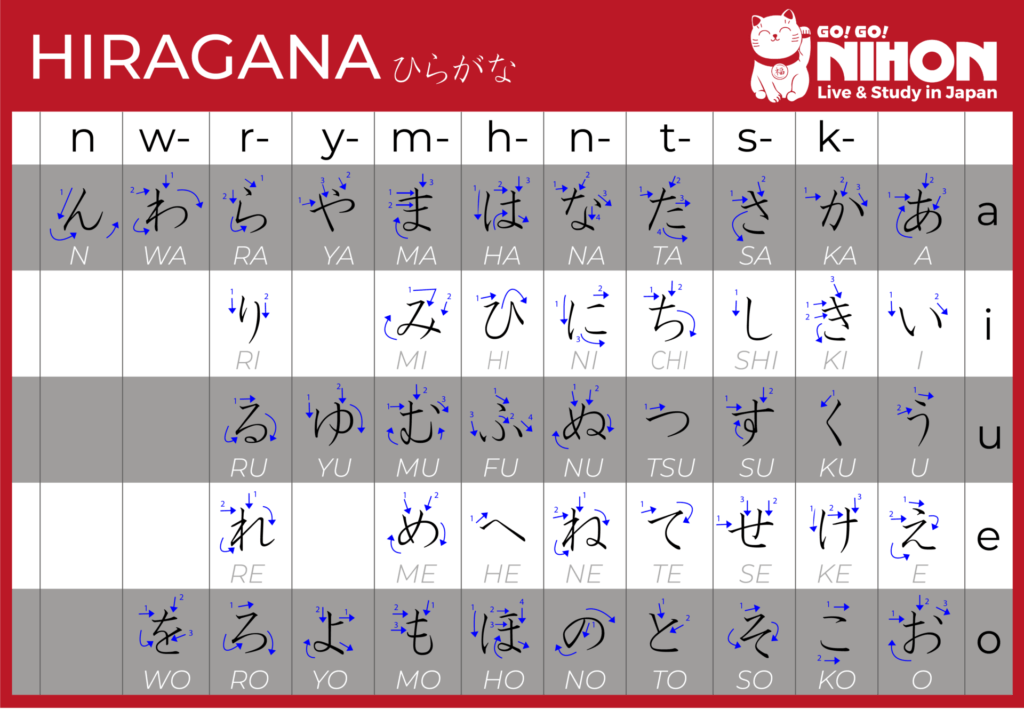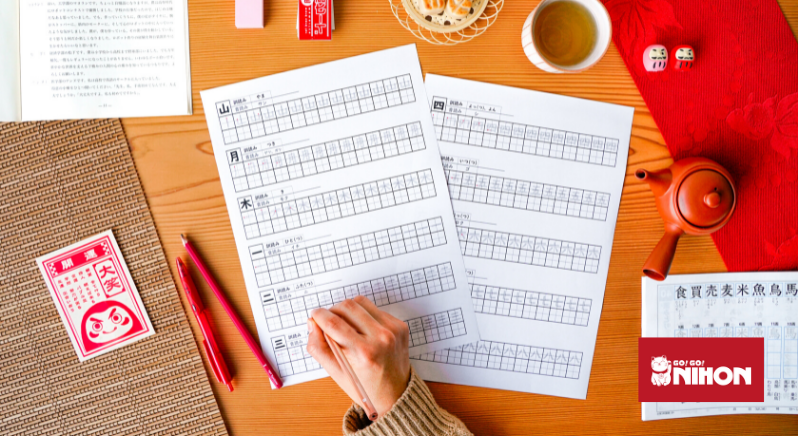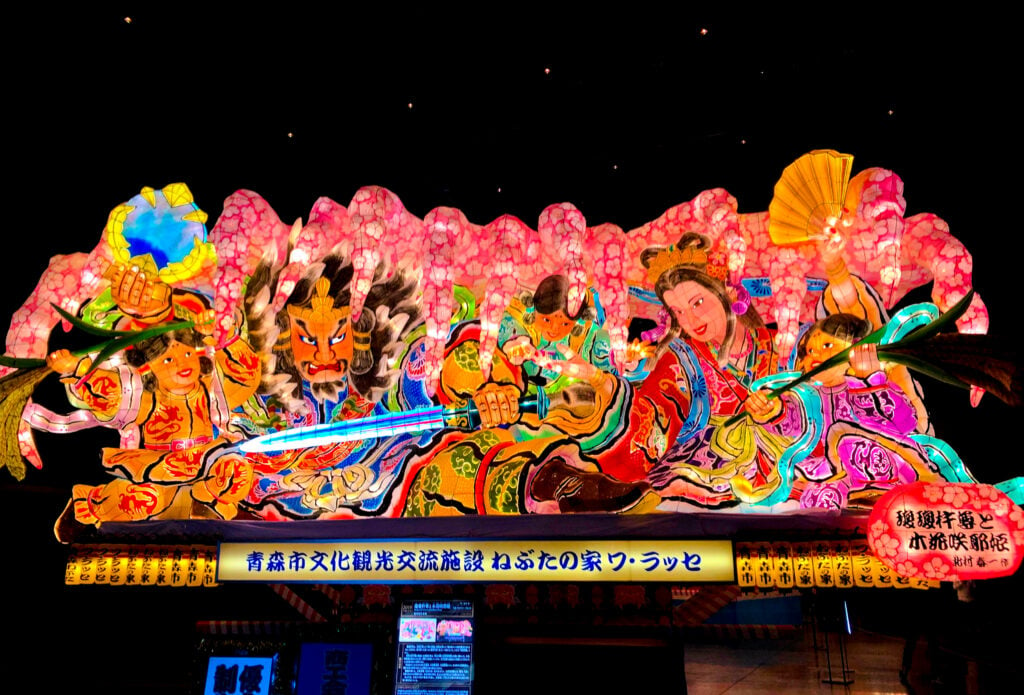The Japanese writing system consists of two types of characters: the syllabic kana – hiragana (平仮名) and katakana (片仮名) – and kanji (漢字), the adopted Chinese characters. Each have different usages, purposes and characteristics and all are necessary in Japanese writing.
Most Japanese sentences will have combinations of hiragana and kanji and occasionally, katakana. Hiragana and katakana are unique to the Japanese language and we highly recommend students master these two systems first before beginning their Japanese language studies in Japan.
Because of the three distinct characters and the varying usage, the Japanese written language is described as one of the most difficult languages to master. Read on to find out all about Japanese characters: hiragana, katakana and kanji.
You can write Japanese characters in two ways. Firstly, they can be in columns going from top to bottom, right to left (like in Chinese). Or horizontally from left to right, top to bottom (like in English). That’s why you’ll find some books open with the spine of the book to the right, while some open to the left.

Hiragana
Hiragana, which literally means “ordinary” or “simple” kana, is used primarily for native Japanese words and grammatical elements. There are 46 basic characters which all symbolise syllabaries, or 71 including diacritics. Each sound in the Japanese language corresponds to one character in the syllabary. Students will typically learn hiragana first, before learning katakana and kanji.
Hiragana is also used for furigana (ふりがな) or yomigana (読み仮名), a reading aid for kanji you will find either next to or above the kanji. It will help you read kanji you may not know yet, which is another reason why it’s important for students to master hiragana first. Children’s books targeted at young children are often written in hiragana.
On a more technical note, hiragana is used to write:
- Okurigana (送り仮名), or suffixes following kanji roots, which may inflect verbs and adjectives
- Grammatical and function words such as particles
- Japanese native words without kanji or with extremely formal or complicated kanji forms.
These basic Japanese characters can also be modified by adding a dakuten (濁点) marker — ( ゙) or a handakuten (半濁点) marker ( ゚).
If all of this is confusing, don’t worry – you will come to understand how hiragana is used the more you study Japanese. To start off with though, it might be helpful to use an app like our very own Hiragana Quest app. It teaches with mnemonics, which make it easier and more fun to memorise each character. Learn more here!
Katakana
Katakana, meaning “fragmentary kana,” are used primarily for foreign words and names, loanwords and onomatopoeia. Some of the most useful Japanese words are untranslatable onomatopoeia, such as ギリギリ (girigiri). This means “to be at the limit”, such as just passing, just making it on the train before the doors close, or being just in time for an appointment.
You can learn more about Japanese onomatopoeia in our article here.
Like hiragana, there are 5 singular vowels, 40 consonant-vowels and 1 singular consonant in katakana. Often you will see both hiragana and katakana in a 5×10 grid, called gojyuon ( 五十音), or “fifty sounds.”
Gairaigo (外来語), or loan words, are all written in katakana, such as バナナ, or banana. Foreign names are similarly also written in katakana. If you have a non-Japanese name, you will probably learn how to write your name in katakana first.

Kanji
There are several thousand kanji characters in regular use. All have different meanings and most have more than one pronunciation, depending on context. For example, 今日 could be read kyō, meaning “today,” or it could also be read konnichi, meaning “recent days”.
The different readings are categorised as either:
- Onyomi (音読み), which is “sound reading,” derived from Chinese, or
- Kunyomi (訓読み), which is “meaning reading,” and are native Japanese readings.
Most characters have at least one of each, but some have more and some only have one.
In Japanese elementary, middle and high schools, students learn more than 2,000 jyoyo kanji (常用漢字), or regularly-used kanji. Fun fact: that’s also the number of kanji required to pass the highest level of the JLPT. Although there are more than 50,000 kanji, most native Japanese don’t know nearly as many.
There isn’t really any trick or shortcut to learning kanji. You must learn and memorise each character along with its readings. But what does make it easier is living and studying in Japan, where you are exposed to Japanese every day. You will get accustomed to how words are read and used faster than you would learning Japanese in your home country.
Learn more about the benefits of learning Japanese through full immersion here.
Rōmaji
In Japan you will also see the Roman alphabet used to spell out sounds. Rōmaji (ローマ字), or the romanised letters, may be used where Japanese text is targeted at non-Japanese speakers, such as on street signs, dictionaries, textbooks and passports.
Rōmaji is also used when typing on the computer. Although Japanese keyboards have the capacity to type with kana, many people use the latin script to type out the sounds and characters in rōmaji.
When you’re first learning the characters, rōmaji will help you read the Japanese words.
Get the basics right with Go! Go! Nihon
All of this can sound a bit overwhelming, especially for beginners. No worries, there are plenty of great resources out there to put you on the right track, from phone applications to books, and even games!
We’ve got some great articles if you’re learning Japanese at home:
*Go! Go! Nihon’s free Japanese language resources
*The best apps to learn Japanese
*In self-isolation? Use this time to learn some Japanese at home!
Free hiragana & katakana resources
Further your hiragana and katakana study with our free online guides. You can access them in all the languages that we support here.
Get organised with our study planner and test your katakana skills with our quiz. If you like, you can also make your own paper Daruma doll!
Another great way to master the basics is to take our online beginner Japanese course. We partnered with Akamonkai Japanese Language School to offer a comprehensive 12-week course designed to give you the best foundation to develop your language skills from. Learn more about the course here.
If you’re totally new to Japanese and you’re planning on visiting Japan in the future, our online beginner crash course would be the perfect learning opportunity. In just 2 weeks you’ll learn useful essential Japanese phrases needed to navigate daily life in Japan, as well as discover Japanese cultural activities and take virtual tours. Learn more here.
For more information or if you have any questions, feel free to contact us!














